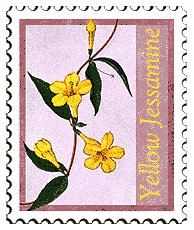
State Flower:
Carolina Jessamine
In 1924, the Carolina Jessamine was adopted as the official State Flower because it is "indigenous to every nook and corner of the state," because its fragrance greets the entrance to every woodland, because "its flower suggests the pureness of gold," and because its perpetual return from the Dead of Winter "suggests a constancy in, a loyalty to and a patriotism in the service of State.
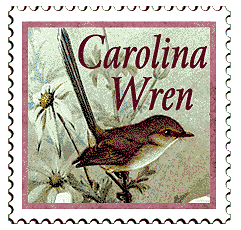
State Bird:
Carolina Wren
The Carolina Wren had always been considered the unofficial State Bird, until 1939 when the General Assembly passed an Act designating the Mockingbird as the official Bird of the State. However, in 1948 the act was repealed and the Carolina Wren, a bird slightly smaller than an English sparrow, with a conspicuous white stripe over the eyes, was reinstalled as the official State.
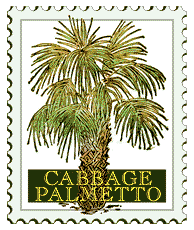
State Tree:
Palmetto
The Palmetto tree was adopted as the official State Tree in 1939. Found along the coastal areas of the state, it has been a symbol of South Carolina since colonial days. (See State Flag description below). Gourmet cooks once esteemed the tree's large leafbud as a delectable ingredient in pickles or relishes. However such uses today are discouraged since the cultivation destroys the palm, taking years to replace it.
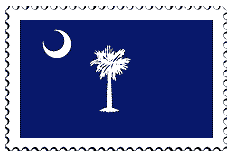
State Flag:
One of the oldest flag designs still in use, South Carolina's flag dates back to 1765 when protesters waved it against the despicable Stamp Act. Later, a Palmetto tree was added to the design due to its significant role in Battle of Fort Moultrie during the Revolutionary War. The fort was made of Palmetto logs, which seemed to swallow cannonballs. Enemy fire simply sank into the soft logs and stayed there, protecting its occupants from harm.
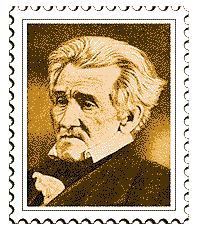
Famous Person:
Andrew Jackson
Andrew Jackson was born in 1767 in the Old Waxhaw Settlement.* A self-educated boy, he was only 14 when he served in the Revolutionary War. Afterwards he became a lawyer, a Congressman, a US Senator and a Tennessee Supreme Court Justice before becoming a Major General in the War of 1812. He achieved fame when, with the help of the notorious New Orleans pirate Jean Lefitte, he defeated the British in the Battle of New Orleans. Due to his self-reliant upbringing, Jackson considered himself a champion of the common man. In 1829 when this leader of the common man moved into the White House, it was like a scene from the movie "Animal House." A rowdy crowd of commoners trampled through the mansion, barging through doors and windows, carrying whiskey jugs and picnic lunches in celebration of their champion's victory. The mob stood on tables and chairs, spat tobacco, threw food, smashed knickknacks, and pocketed White House "souvenirs." Jackson had to sneak out the back door to escape harm. No one seemed to notice their hero missing and the party lasted well into the night before the crowd was finally lured out by an offer of free drink.
*At the time of his birth, Old Waxhaw Settlement bordered on North and South Carolina. After the War of 1812, both Carolinas argued over who could claim the hero as a native son, even though Jackson maintained that he was from South Carolina. A subsequent border dispute placed Waxhaw in North Carolina, where it remains today. Therefore, both states can truthfully claim Jackson as their own.)